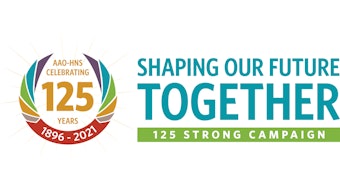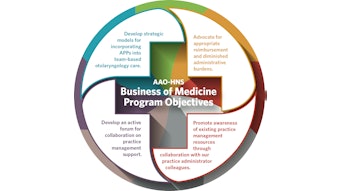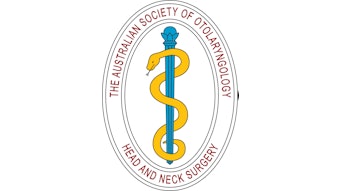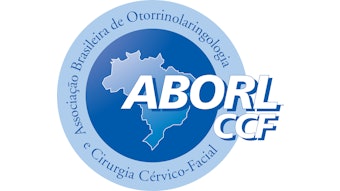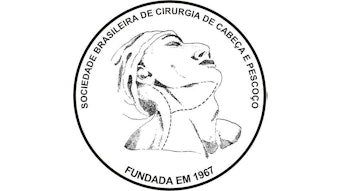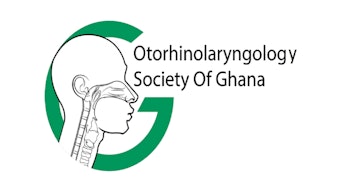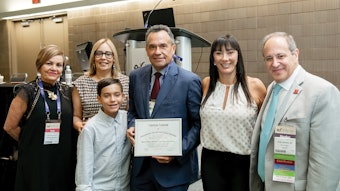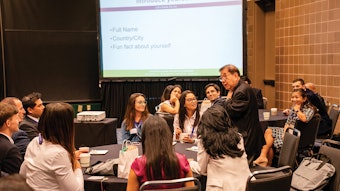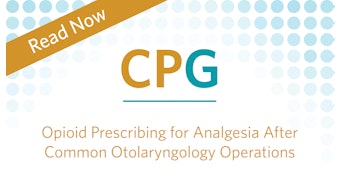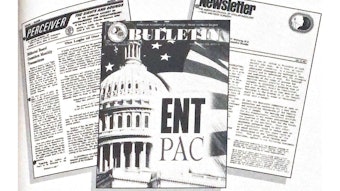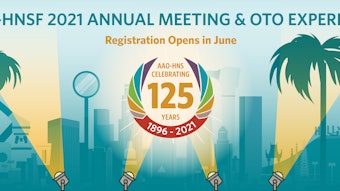May Is Better Hearing and Speech Month │ Out of Committee: Hearing | Cochlear Implantation for Unilateral Hearing Loss in Adults and Children
Unilateral severe-to-profound sensorineural hearing loss has been estimated to affect between 12 and 27 per 100,000 adults in the United States and 0.4 to 3.4 per 1,000 live births.
Kevin D. Brown, MD, PhD; Daniel M. Zeitler, MD; and Matthew L. Carlson, MD
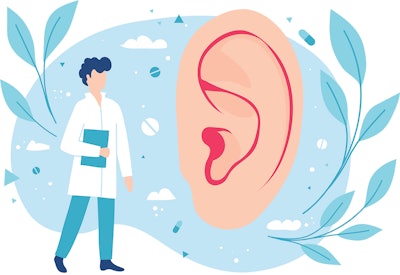
Intervention for UHL was initially focused on listening devices that reroute sound from the deafened ear to the normal or near-normal hearing ear, such as contralateral routing of signal (CROS) aid or bone-anchored hearing implant (BAHI). These technologies provide access to sound from the poorer hearing side, but do not restore binaural hearing. Speech perception in noise is therefore only improved in selective situations, and conversely the signal from BAHI or CROS can actually interfere with speech perception. Localization of sound is not improved with either BAHI or CROS and neither is tinnitus.
Considerations in the Adult Population
Tinnitus is an important indication for considering cochlear implantation in case of UHL. Electrical stimulation of the peripheral auditory system has been shown to reduce or abolish tinnitus percepts in many adults. Thus, cochlear implantation is particularly appealing for patients with advanced UHL, where conventional hearing aids and masking strategies are generally not effective. Indeed a recent metanalysis reports that over 90% of adults with single-sided deafness received significant benefit from this approach.
Adults with UHL also suffer from reduced speech perception in quiet and noise as well as difficulty with localizing sound. Two prospective clinical trials, with 20 subjects each (total 40 subjects), were performed as part of a recent Food and Drug Administration (FDA) trial in the U.S. A separate 34-subject prospective trial was performed by a group comprising patients from Australia and Belgium (Tavora-Vieira, Rajan et al. 2019). Another prospective National Institute of Health trial was also performed with an additional 47 subjects for a total of 121 subjects (Firszt, Reeder et al. 2018). Buss et al. demonstrated a mean increase in speech perception in quiet for CNC words from an average of 4% to a mean of 55% with the cochlear implant alone at 12 months after implantation (Buss, Dillon et al. 2018). An improvement in sentence perception was also demonstrated in quiet with multiple talkers (TIMITQ) from 55% correct to 75% when both the acoustic hearing ear and the cochlear implant ear were used together (Firszt, Reeder et al. 2018). As much of human existence occurs in work and social settings in which noise is a constant attendant, speech perception in noise is a more critical metric to determine how subjects are performing. Buss et al. demonstrated an improvement in sentence perception in noise by an average of 36 percentage points (Buss, Dillon et al. 2018). A marked improvement in speech perception in noise was also seen using adaptive tests (Firszt, Reeder et al. 2018, Tavora-Vieira, Rajan et al. 2019). Collectively these data demonstrate improvements in speech perception in quiet and noise with the cochlear implant in comparison to without the implant.
Localization is also markedly improved with the addition of a cochlear implant. An improvement in localization from an average of 64 degrees RMS error to 25 degrees was demonstrated in the FDA trial, this persisted out to one year (Dillon, Buss et al. 2017, Buss, Dillon et al. 2018). Data from the multicenter trial demonstrated a similar improvement from 60 degrees RMS error to 22 degrees (Tavora-Vieira, Rajan et al. 2019) using the same system. Firszt et al. also showed consistent, significant improvement with an average RMS error improving from 50% to 30% RMS error. These studies demonstrate that patients are able to better determine the direction that sound is coming from after cochlear implantation for unilateral hearing loss.
It is of substantial interest to also determine how the subject perceives the benefits as it relates to their quality of hearing/quality of life. The multicenter trial evaluated subjects before and after implantation using the short form of the Speech, Spatial and Qualities (SSQ12) form. This demonstrated a marked improvement in the SSQ12 score from an average score of 4 to 6 after 5 years of use (Tavora-Vieira, Rajan et al. 2019). Firszt et al. used the full SSQ questionnaire and demonstrated marked, statistically significant improvements in all three domains of the SSQ, including speech, spatial hearing, and qualities of hearing (Firszt, Reeder et al. 2018). They also utilized the Glasgow benefit inventory to determine overall benefit and determined a benefit of a cochlear implant of 37.9 (score of zero would indicate no benefit). The FDA trial data also demonstrated significant benefit of a cochlear implant in the Abbreviated Profile of Hearing Aid Benefit (APHAB) test, most notably showing benefit in situations of background and reverberant noise (Dillon, Buss et al. 2017). Similar marked and significant benefits were seen with speech, spatial, and qualities of hearing in this study as well.
Considerations in the Pediatric Population
Due to the exciting benefits seen in the adult population for cochlear implantation in cases of UHL, it is not surprising that substantial interest has occurred in implanting children with UHL. There are, however, a number of considerations that exist in children that are different than in adults. Due to different etiologies in children with UHL, it becomes critically important to distinguish anatomic contraindications to implantation, including cochlear nerve deficiency and cochlear malformations more severe than mondini. This is a crucial distinction, as poor outcomes due to distorted cochlear implant signals through a severely malformed cochlea or hypoplastic nerve will likely lead to non-use in the presence of normal hearing in the contralateral ear.
The effects of UHL on children can be similar to adults with some notable considerations. Children with UHL have greater difficulty than their normal hearing peers in both quiet and dynamic listening environments. They also have more difficulty with localizing the source of sound. The key difference is that children, especially younger children, are still developing and learning language. The impacts of UHL on speech and language development as well as psychosocial development in an education setting could be substantial. Children are unable to spatially orient themselves favorably to variable locations of sound source and noise with one hearing ear in a classroom setting. Accumulated auditory effort from straining to hear could lead to substantial fatigue with further negative impact on learning. Not surprisingly, children with UHL have demonstrated poorer language scores than their hearing peers and are more likely to be held back a grade (Lieu 2018).
With these known substantial impacts, it became critical to perform well-designed studies to address the benefit of cochlear implantation in children with UHL. Retrospective studies and case series have evaluated outcomes in children receiving cochlear implants off-label. These have variably demonstrated improved speech in quiet, improved speech in noise, and better localization of sound. An improvement in subjective measures of speech, spatial, and qualities of hearing also has been seen. Results from a prospective clinical trial (ClinicalTrials.gov identifier NCT02963974) are forthcoming. This study evaluated outcomes in 20 children with UHL following cochlear implantation. This trial demonstrated rapid and consistent increases in speech perception outcomes in quiet and noise, and substantial improvement in sound localization. Subjective quality of hearing was likewise markedly improved especially in subdomains associated with binaural hearing, suggesting that children are now able to appreciate the benefits of binaural hearing. Together these data suggest that children with UHL who undergo CI are now able to access binaural cues that are unable to be provided by any alternative technology.
Restoration of binaural hearing is the standard of care in patients with bilateral hearing loss. Patients with UHL should be no different. Given the consistent and significant improvements in speech perception in quiet and noise, sound localization, suppression of disabling tinnitus, and hearing-related quality of life, CI for UHL was approved by the FDA in 2019 for adults and children ages five years and older. It should be strongly considered as a therapeutic option for interested and motivated adult and pediatric patients with UHL.
References
Buss, E., M.T. Dillon, M.A. Rooth, E.R. King, E.J. Deres, C.A. Buchman, H.C. Pillsbury and K.D. Brown (2018). "Effects of Cochlear Implantation on Binaural Hearing in Adults With Unilateral Hearing Loss." Trends Hear 22: 2331216518771173.
Dillon, M.T., E. Buss, M.L. Anderson, E.R. King, E.J. Deres, C.A. Buchman, K.D. Brown and H.C. Pillsbury (2017). "Cochlear Implantation in Cases of Unilateral Hearing Loss: Initial Localization Abilities." Ear Hear 38(5): 611-619.
Dillon, M.T., E. Buss, M.A. Rooth, E.R. King, E.J. Deres, C.A. Buchman, H.C. Pillsbury and K.D. Brown (2017). "Effect of Cochlear Implantation on Quality of Life in Adults with Unilateral Hearing Loss." Audiol Neurootol 22(4-5): 259-271.
Firszt, J.B., R.M. Reeder, L.K. Holden, N.Y. Dwyer and T. Asymmetric Hearing Study (2018). "Results in Adult Cochlear Implant Recipients With Varied Asymmetric Hearing: A Prospective Longitudinal Study of Speech Recognition, Localization, and Participant Report." Ear Hear 39(5): 845-862.
Lieu, J.E.C. (2018). "Permanent Unilateral Hearing Loss (UHL) and Childhood Development." Curr Otorhinolaryngol Rep 6(1): 74-81.
Tavora-Vieira, D., G.P. Rajan, P. Van de Heyning and G. Mertens (2019). "Evaluating the Long-Term Hearing Outcomes of Cochlear Implant Users With Single-Sided Deafness." Otol Neurotol 40(6): e575-e580.
